Looking Back at Five L.A. Film Locations from Dennis Hopper’s ‘Colors,’ 35 Years Later
1:27 PM PDT on April 7, 2023

Film location manager Kojo Lewis tells L.A. TACO that the 1988 movie Colors was dropped in his lap when he got a call from a colleague.
Lewis recalls the contact telling him, “I’ve got a feature that I’m working on and I’ve got a lot of locations. We’re going to be filming in South L.A. and different locations around the L.A. area.”
He asked if Lewis would be able to help him tidy up and lock down a few outstanding locations for what would be Dennis Hopper’s first directorial effort in eight years. After working his first day on Colors, Lewis got another call from the the film’s location manager, who was leaving the production for a bigger film in Chicago.
“I thought, oh great, that’s it for this job,” says Lewis.
But the departing location manager recommended to producers that Lewis take the reins. The next day he was in the office with the production staff. Contrary to what he was initially told, he learned that 85% of the film’s locations hadn’t been locked down, and the film was set to shoot in two-and-a-half weeks.
Lewis recalls saying, “You aren’t prepping anything—even if you know all the locations—in two-and-a-half weeks unless it’s a little music video or something. I knew it was going to be a challenge. But I said I was gonna do it, so I did it.”

Colors is centered around two officers from the LAPD’s infamous, and later defunct, CRASH unit (Community Resources Against Street Hoodlums). The older veteran, Hodges (Robert Duvall), who’s on the verge of getting his pension, has a diplomatic approach to handling street gang members. His hotheaded rookie partner, McGavin (Sean Penn), immediately resorts to intimidation and assault. After the drive-by assassination of a Bloods gang member, the two officers become entangled in a tit-for-tat street war.
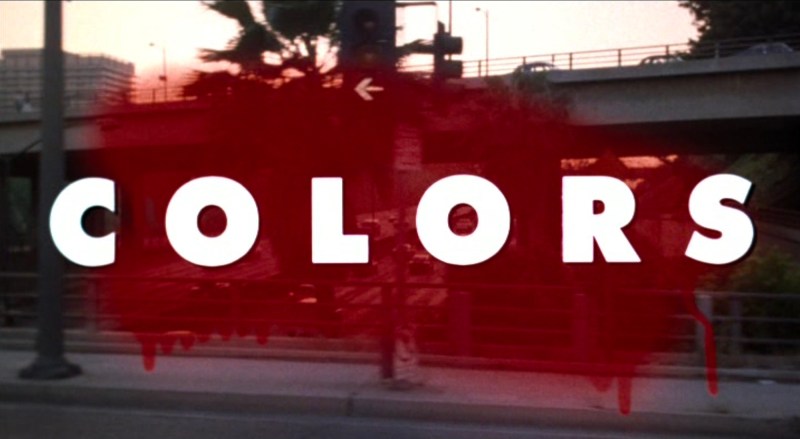
Lewis had a bunch of L.A.-shot, episodic television shows like Cagney & Lacey, The A-Team, and Hardcastle and McCormick on his resume, and also worked locations on Robert Townsend’s Hollywood Shuffle (1987). But Colors was the largest feature he had dealt with up to that point. (A few years after Colors, Lewis worked on the seminal L.A. film Boyz n the Hood.) He had one assistant location manager and recalls looking at about sixty-five different locations upon taking the job.
“The way it was basically explained to me was that Hodges and McGavin never really had a route that was theirs, they were all over the place,” says Lewis. “There was Venice, there was inner town stuff, there was South Central and East L.A.”
Colors shot as far north as Lincoln Heights and as far south as San Pedro. Lewis was still locking down locations into the first three weeks of principal photography, working eighteen hour days to get it done.
To mark the 35th anniversary of Colors, released on April 15, 1988, Lewis spoke with L.A. TACO about five standout locations from the film.
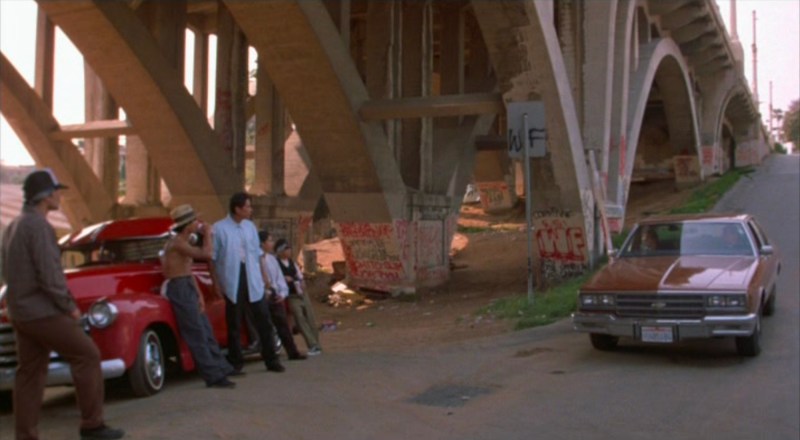
Lorena Bridge
Hodges and McGavin’s burnt orange ’85 Impala descends slowly into the shadow of an enduring concrete bridge. The bottom of its majestic arches are covered in graffiti and tagged with the letters "WF." The unmarked cop car pulls up alongside a handful of White Fence gang members. Hodges has had prior dealings with the leader and knowingly asks, “You seen any gang members around?”
Lewis says, “There are places that you walk into, at least for me as a location manager, that make a statement that adds to the quality of the production.”
As far as he’s concerned, the Lorena Bridge in Boyle Heights is one of them.
“To me, the bridge is a phenomenally beautiful, intact location,” he says, also calling it “aesthetically perfect.”
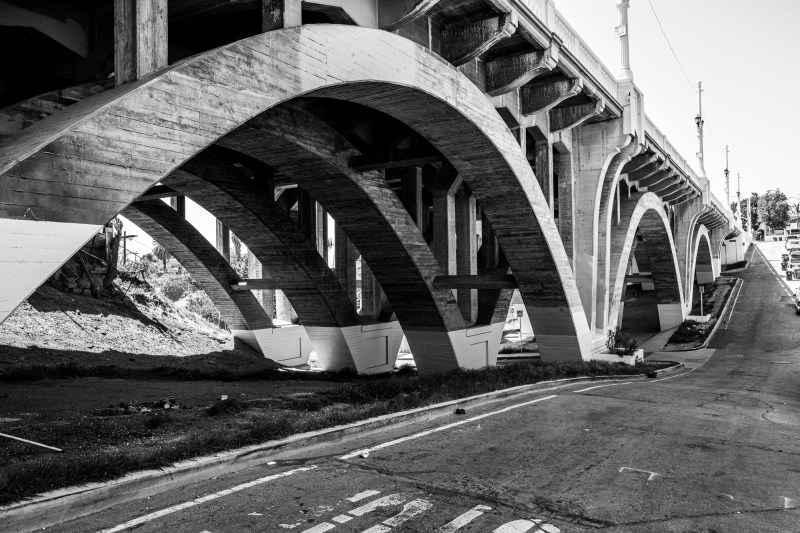
It was Lewis’ assistant location manager, Rene Botana, who suggested they look at the Lorena Bridge.
“We swung down there and Dennis was like, ‘Wow. Yeah,’” says Lewis. “I loved it; Dennis loved it.”
He adds, “I remember I was dragged over by Rene to talk to a couple of the local boys that lived there and hung out. I explained to them what we were thinking about doing and we kind of got the bring it on thing. It was a great shoot. The neighborhood was super.”
The reinforced concrete bridge built between 1927-1928 has appeared in films like Boulevard Nights (1979), Breakin’ 2: Electric Boogaloo (1984) and Mi Familia (1995). But it’s arguably associated closest with Colors, even though it appears only briefly in the aforementioned scene and in a quick nighttime shot, for a combined total of one minute and fifteen seconds of screen time.
Located at 4th St. & Bernal Ave., Boyle Heights
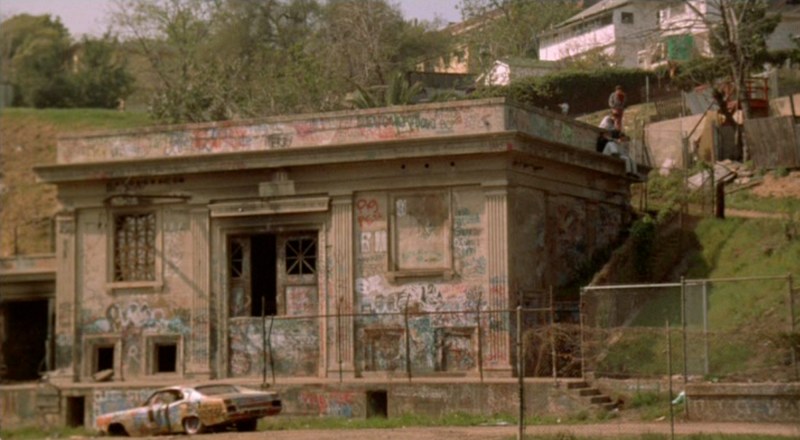
Toluca Substation and Belmont Tunnel
After Hodges and McGavin leave Boyle Heights, an adolescent youth throws a rock at the cops’ car. He and a group of slightly older teen boys and girls scatter. Two of the teens slide down a concrete wall next to a fenced-off train tunnel. McGavin, who’s clearly pissed, looks over a railing from the top of the hill. The two officers get in their car, pursue, and wind up at a graffiti-covered substation. It’s the turf of 21st Street, a fictional, multi-racial gang headed up by its hardened, but cool-headed leader, “Frog” (Trinidad Silva)
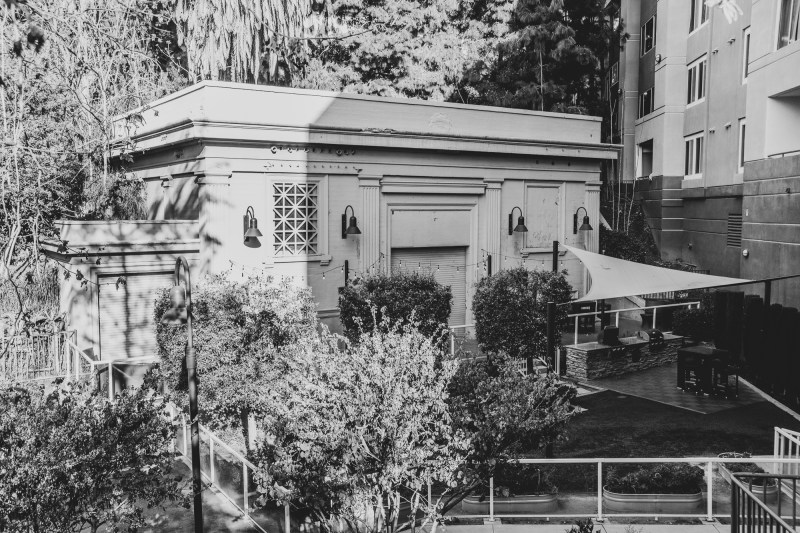
The Toluca Substation and adjacent Belmont Tunnel were part of the Pacific Electric Railway Hollywood Subway between 1925-1955. When the train line ceased operations, the substation and tunnel were shuttered. A few years before shooting Colors, the substation, abandoned and overgrown, became a popular tagging spot, which is evident in the film. The graffiti, however, was somewhat problematic for the production.
“There were certain gang symbols that they [the filmmakers] didn’t want shown in the film,” says Lewis, as they weren’t depicting any real life gangs in these scenes. “But you don’t come into someone’s neighborhood and start erasing stuff without getting some permission. You can’t disrespect people; that’s their painting. The graffiti that is painted all over L.A. is an art form and it transcends. You wouldn’t walk into a museum and paint over a Rembrandt.”
After conversing with some of the locals who were known to tag the substation, Lewis’ solution was to bring in some 4-foot by 8-foot pieces of plywood, have them painted with the production’s own graffiti, and cover the problematic elements.
The production also filmed inside the shuttered substation building.
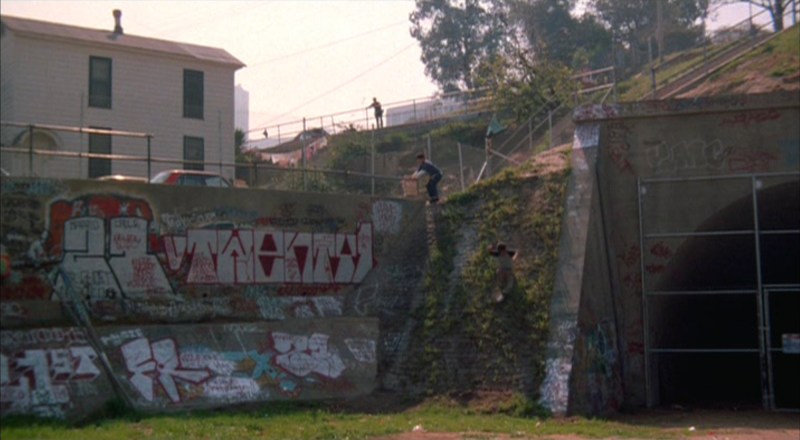
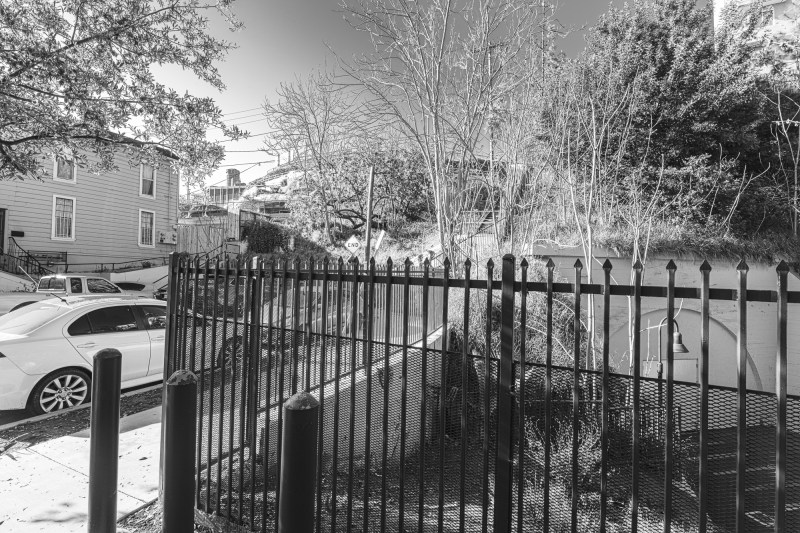
In 2004, both the Toluca Substation and the Belmont Tunnel were given historic status, but efforts to designate the area as a graffiti art park failed. Today, the location is barely recognizable from its ramshackle appearances in films like Friday Foster (1975), V (1983), Murphy’s Law (1986), The Running Man (1987), Predator 2 (1990), Reservoir Dogs (1992), and The Replacement Killers (1998).
The substation building and walled-off tunnel entrance are nestled in the rear of the Belmont Station apartment complex. They are utilized as an outdoor lounge area for tenants and a dog park, respectively.
Located at 1304 W. 2nd St., Westlake
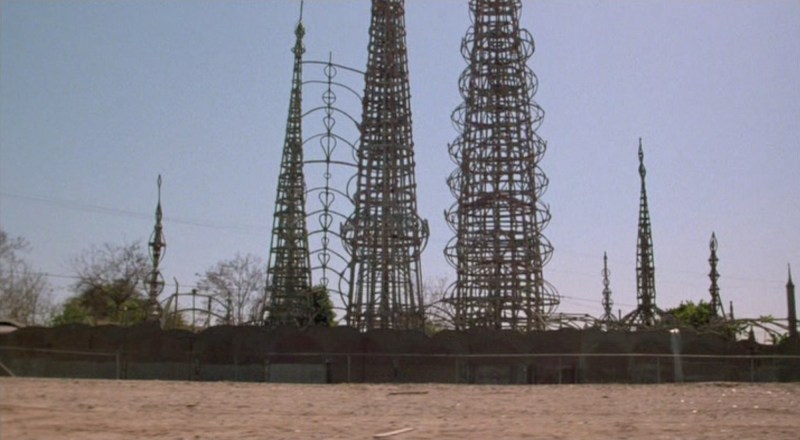
Watts Towers in Colors. Screenshot via Orion Pictures.
Watts Towers
Lewis cites Colors as significant because major studios at the time weren’t known for sending film crews to South Central.
“They didn’t know South Central L.A.; they didn’t really even know East L.A.,” says Lewis. “I’m talking about White Hollywood. At that time, they didn’t know anything about that.”
Lewis says he’s not at all referring to Hopper, the Oscar nominated actor and Hollywood maverick with whom Lewis loved working.
“Dennis had a perspective [that was unique]," says Lewis. "It wasn’t anything like that. I’m just talking about the overall education at that point in Hollywood. A lot of people thought that if you crossed Olympic Boulevard you were in Compton.”
It’s a sentiment he’s shared before and it stems from multiple, tired conversations he’s had with producers about the safety of taking crews to South Central.
“I’ve always chuckled in that sense because I don’t know what kind of situations they think people are in, or what they’ve learned. But I said, ‘Look, as long as you can say good morning and hello, and you can be a human being, you won’t have a problem with filming anywhere in this town.’ Now, go out to Pacific Palisades and act a fool and see how quickly somebody is checking your butt.”
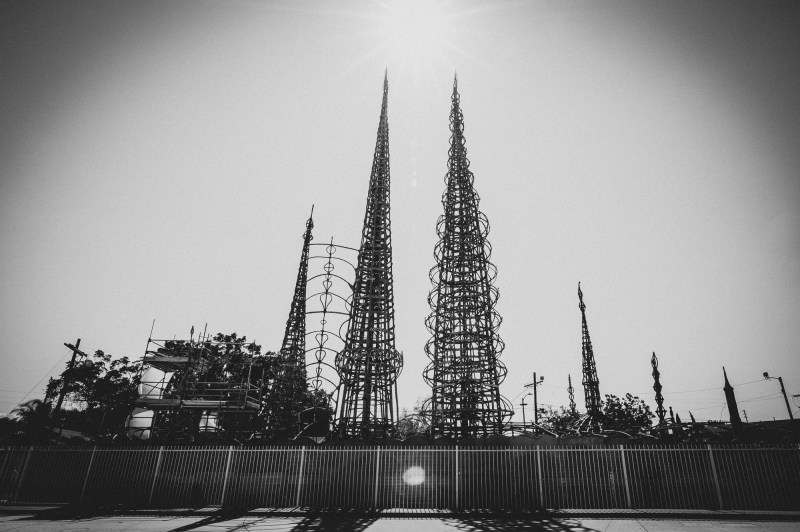
Colors shot around the Nickerson Gardens, Imperial Courts, and Jordan Downs housing projects, but certainly the most recognizable South Central location is the area’s famed landmark: Watts Towers.
A blocks-long car chase begins when Crips members open fire on a modest, one-room church (no longer standing) near 114th Street and Wilmington Avenue. The chase ends when the gang car crashes into a section of the towers, flips and explodes.
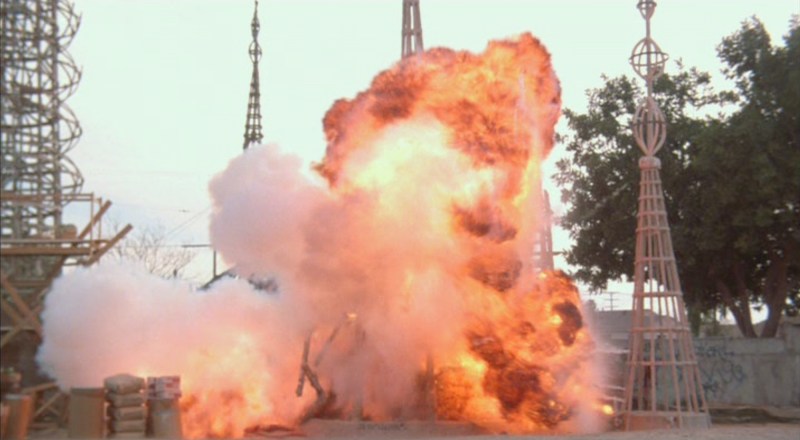
Lewis remembers that Watts Towers was scripted as the location for the culmination of the car chase.
“That’s a cultural part of Watts,” says Lewis. “For some people it’s just as well known as the Santa Monica Pier.”
Though set pieces were built to recreate sections of the towers, there was understandable concern after the film was released.
Lewis says, “For a lot of people, especially if you lived anywhere around the area and you had been to the cultural center —where they have phenomenal things going on like art festivals and drum days and dance performances—and then all of a sudden you go to see this film, because it was made in South Central, and you see that accident… There were some people that thought we might have actually blown up parts of the towers.”
Located at 1765 E. 107th St. Watts
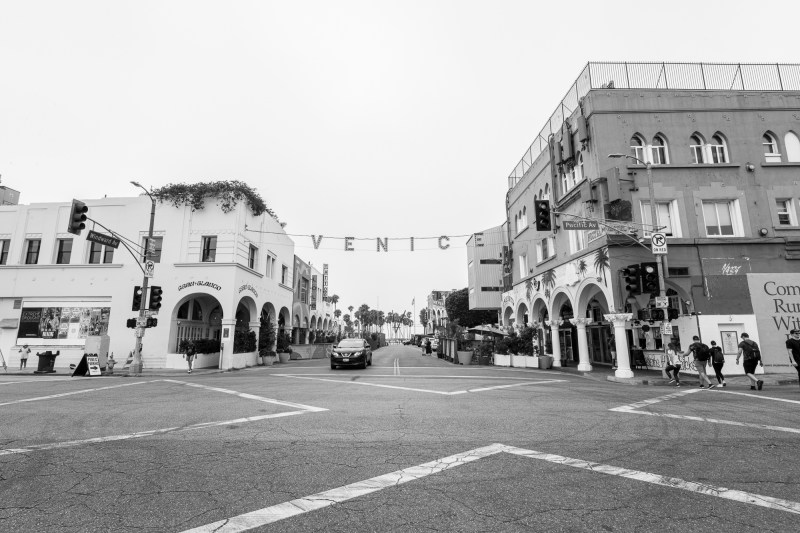
High Top Chase at Venice Beach
In the mid-1980s, decades before tech companies began moving into Venice, Hopper bought a Frank Gehry-designed condo triplex in the beach community. The home, built by the famed Disney Concert Hall architect, was located on Indiana Avenue in an area of Venice that others of Hopper’s Hollywood stature may have frowned upon. The neighborhood, Oakwood, was covered in graffiti and broken glass, and the firing of gunshots was a nightly occurrence.
“I don’t mind it—I kind of like it,” Hopper told the New York Times in July of 1987, while he was editing Colors. Plus, Hopper felt at home in Venice, having spent a lot time there during his late teens and early acting career.
Hopper later purchased the lot next door and commissioned a new home for his Venice compound. The Deconstructivist-style, corrugated metal main house, designed by architect Brian Murphy, was completed in ’87. It was less than a mile from where Hopper shot one of the main set pieces for Colors—a foot, motorcycle, and car chase through the streets of Venice Beach.
“He wanted it set there,” says Lewis of the scene. “I’m sure that was Dennis showing off his home area of Venice.”
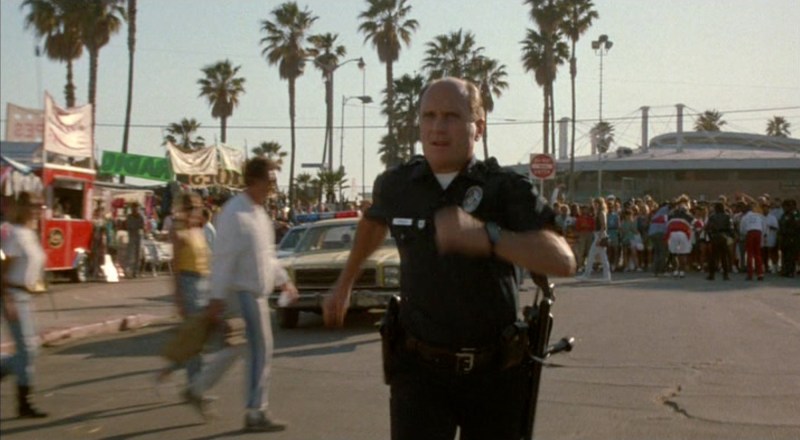
The scene begins with Hodges and McGavin on the beach. As they make their way back to their car, Hodges locks eyes with High Top (Glenn Plummer), a Blood who has been selling drugs to Crips, on Windward Avenue between Pacific Avenue and the beach.
A group of spectators can be seen behind Hodges, watching the action. It’s likely that this was just the public gathered during filming.
“That’s Venice," says Lewis. "If something happens there, that’s usually the type of thing that happens - there’s a crowd."
It works for a scene in which a cop is yelling commands over a sea of people.
The scene continues as High Top jumps out of his car, steals a motorcycle, and takes off. Hodges runs after him while McGavin gets in his car and pursues. The chase spans about five blocks.
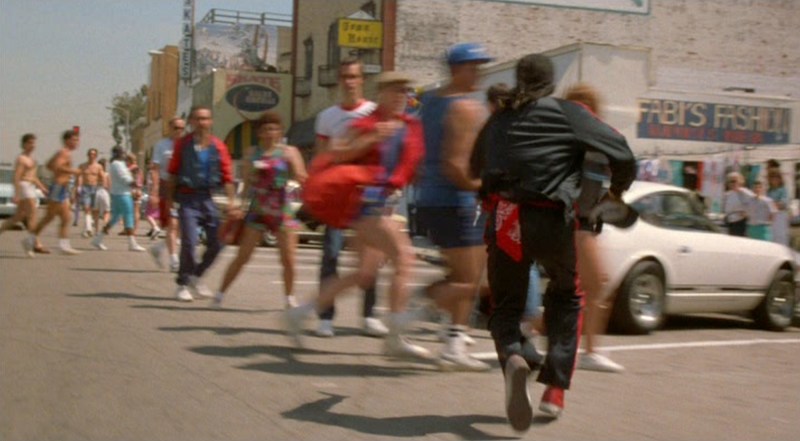
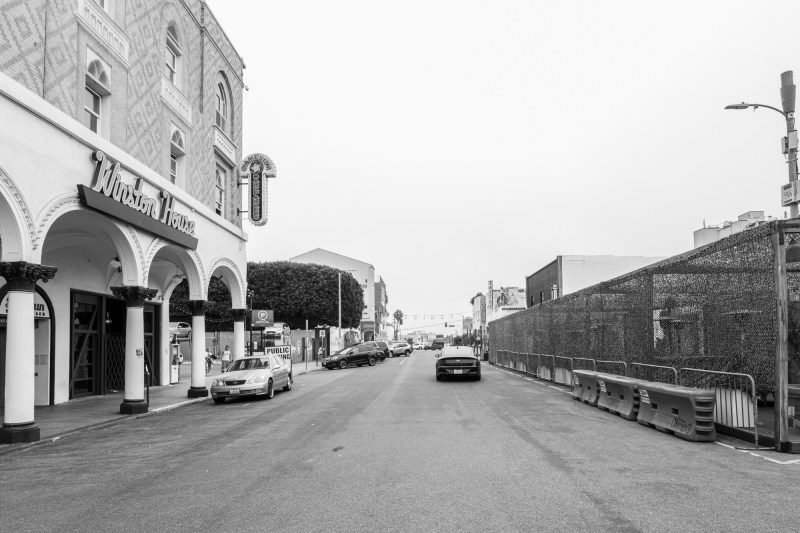
Lewis says the location was ideal because Hopper wanted to capture car-to-motorcycle tracking shots of shots of McGavin at one end of a street and High Top at the other end while the buildings in between whizzed by.
When High Top tries to avoid colliding with a car, he crashes through the window of a restaurant. A sloppy, over-the-top fistfight between High Top and the two officers ensues in the restaurant’s kitchen. The restaurant, located the corner of Venice Boulevard and Pacific Avenue, was the upscale Mexican dining spot Rebecca’s, a Venice institution of the day. Rebecca’s interior was, incidentally, also designed by Gehry. Today, the Italian eatery Opsi occupies the space.
Located at Windward Avenue & Pacific Avenue, through 2025 Pacific Avenue, Venice
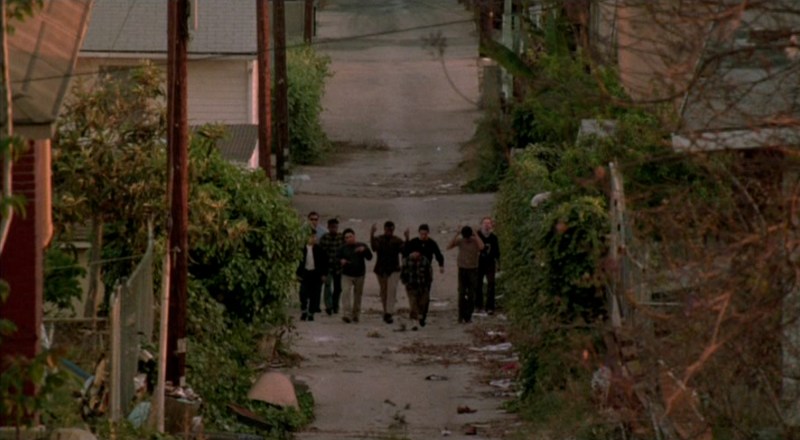
“The Walk” and Hilltop Raid
After a drive-by shooting by Crips on a house in City Terrace, where the 21st Street Gang is partying, Frog and his crew prepare to retaliate. The sequence begins with a wide shot of the downtown L.A. skyline that tilts down and slowly zooms into in a long-lens shot of Frog’s gang walking in a staggered line up an alleyway.
“The walk, as we called it. They took the walk,” says Lewis.
He remembers Hopper being inspired by the Victor Heights location that spans College Street to Figueroa Terrace with Beaudry Avenue and Centennial Street on the peripheral edges. The walk ends at Figueroa Terrace where, as the sun sets, the gang loads up into a couple of vehicles parked in the alley.
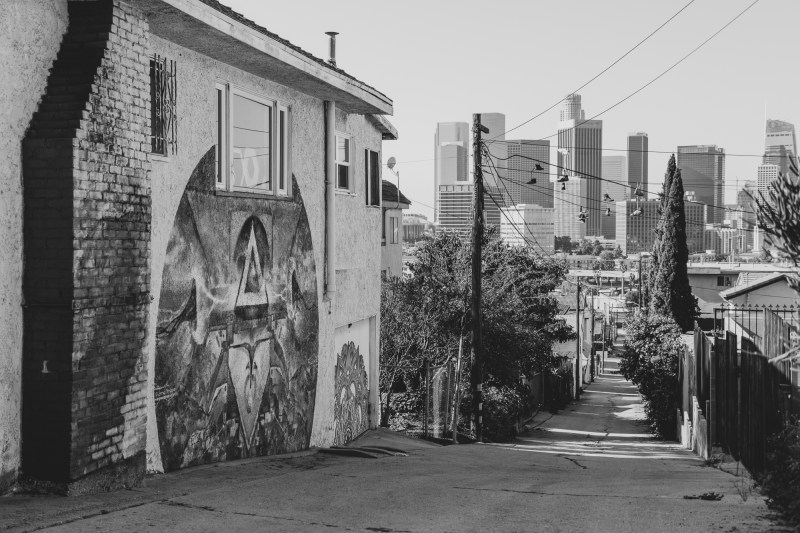
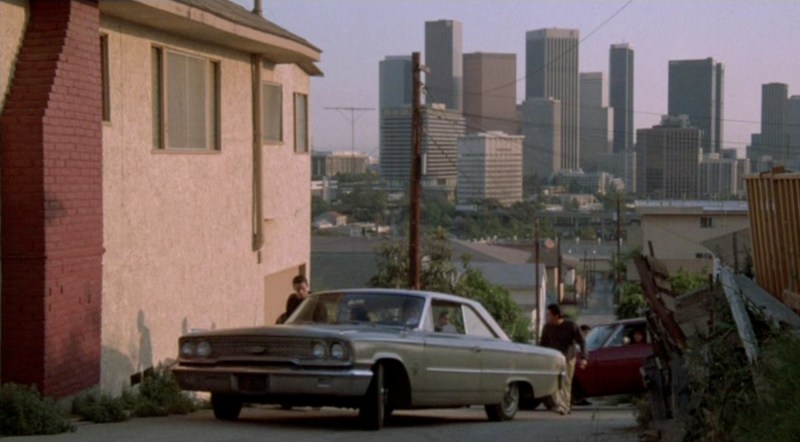
But is was the empty hilltop adjacent to the alley that proved problematic and the subject of a potential shakedown. The empty patch of land overlooking Chavez Ravine was used for the film’s climactic police raid of the 21st Street Gang.
Lewis spent a month trying to track down the presumed owner of the property for the purposes of filming and building lighting rigs for the overnight shoot.
Lewis says, “We went everywhere; we tried everyplace.”
The film commission assisted, but no luck. When Lewis found out that the owner was in Japan, he sent letters to Japan. No response. With Hopper determined to use the location, Lewis obtained a shooting permit and charged forward.

On the night of the shoot, Lewis noticed a man surveying the property.
“You always have people who look at stuff [when you’re filming], but there was just something about him that said to me, this is not just a guy. He’s kind of looking at the light towers and is walking through the property.”
Just before the cameras were set to roll, the police arrived at the behest of the unannounced guest, who angrily introduced himself as a representative of the property owner. He immediately started yelling to get everyone and everything out.
As the location manager, Lewis was the bonded production representative and police began leading him to their cruiser to head downtown. Just as they were about to depart, Lewis asked to go back up the hill. He wanted to be shown where the property line began.
“The only thing that was on it was one scaffold with lights,” he says. “Everything else was empty. I got to a point where I had had it. I said, ‘Get the crew up here and move that damn scaffold five feet and we’re off the property. The guy came back and said, ‘Leave it there and give me $10,000.’ I said, ‘Well, if you can reach the owner in Japan right now, I will talk with him on the phone and we will negotiate.’”
When the representative declined and still wanted the money, a frustrated Lewis explained the lengths he went to in order to get in touch with the owner, and that he would rather move the equipment than pay any amount of money.
“He got all quiet,” says Lewis. He finally told producers, "Just give the man a few thousand dollars for the light stands on the property. Let’s go shoot this shit. And so off we were shooting the final scenes of Colors.”
(Side note: it turned out that the City had no record of a registered owner of the bordering hilltop parcel where the film’s final action was shot. Today, apartment buildings stand on that spot.)
Located at Figueroa Terrace between Beaudry Ave. and Centennial St., Victor Heights
Follow Jared on Twitter at @JaredCowan1.
Jared Cowan writes and podcasts about L.A. filming locations. He also works as a photographer and camera operator.
Stay in touch
Sign up for our free newsletter
More from L.A. TACO
The Ten Best Panaderías in Los Angeles to Get Your Pan De Muerto For Dia De Los Muertos
Los Angeles has the best pan de muerto scene in the country, from a sourdough variation to others that have been passed down through generations. Here are ten panaderías around L.A. where you can find the fluffy, gently spiced, sugar-dusted seasonal pan dulce that is as delicious as it is important to the Dia de Muertos Mexican tradition.
A New Genetically Modified ‘Low THC’ Hemp Was Just Approved by the USDA
The modified hemp plants are not available for purchase yet but when they are, they will likely appeal to hemp farmers since hemp that exceeds the .3% limit on THC can not legally be sold and must be destroyed.
Walnut Woman Gets Prison Time For Selling L.A. Homes That Weren’t Actually For Sale
Using other people's broker's licenses, Gonzalez listed the properties on real estate websites, even though many were not on the market, and she did not have authority to list them.
Family Awarded $13.5M In 2019 LAPD-Related Death Of Father
According to the suit, Jacob Cedillo was sitting on the sidewalk outside a Van Nuys gas station on April 8, 2019, at about 4:15 a.m. when police were called. Officers responded, immediately putting Cedillo in handcuffs even though he had not broken the law, according to the complaint.
L.A.’s 13 Most Infamous Murder Sites
While these sites' physical appearance or purpose may have changed over time, the legacy and horrors of what might have happened there linger forever. Once you know the backstory, walking or driving past them on a cool, crisp October evening is sufficient to provide you with a heaping helping of heebie-jeebies.